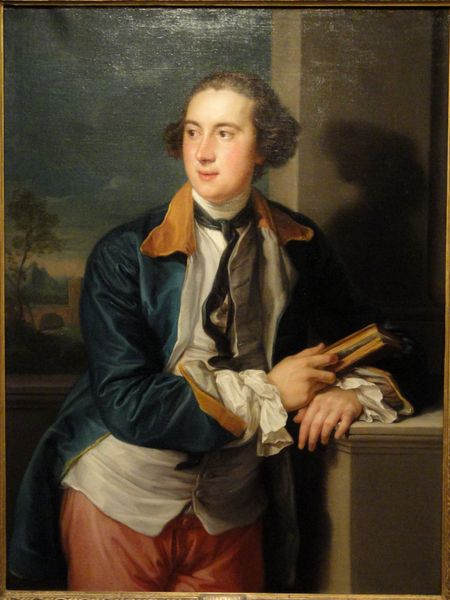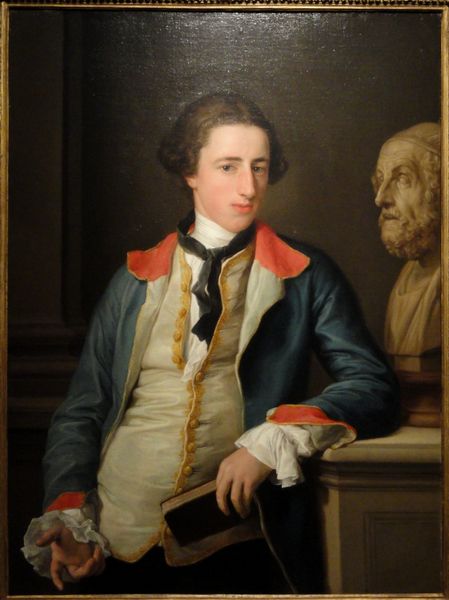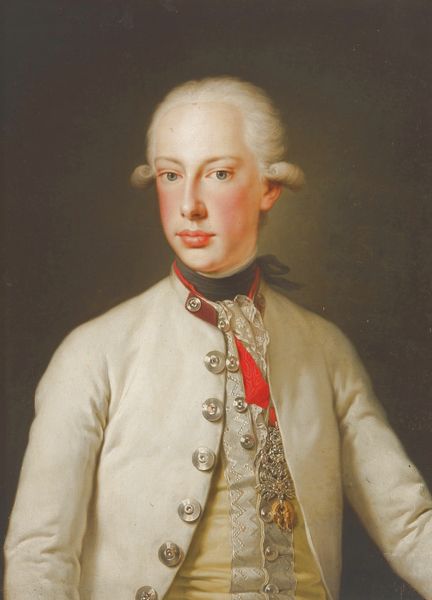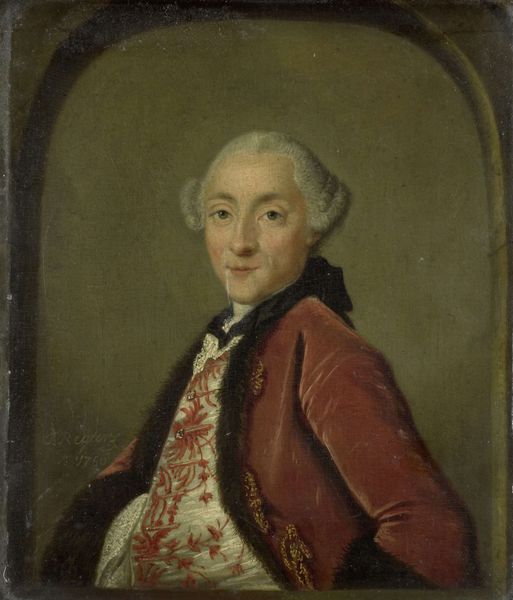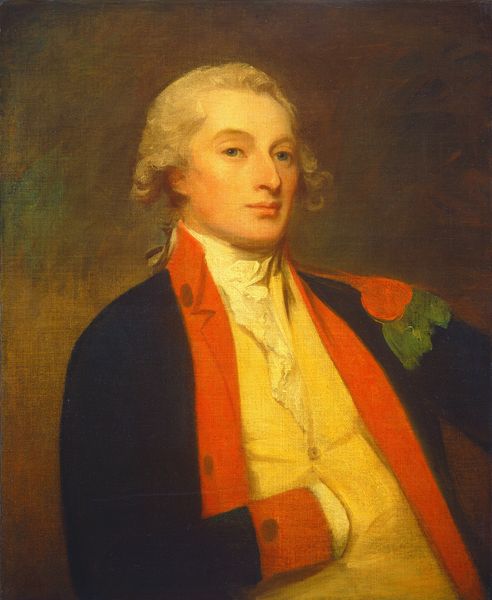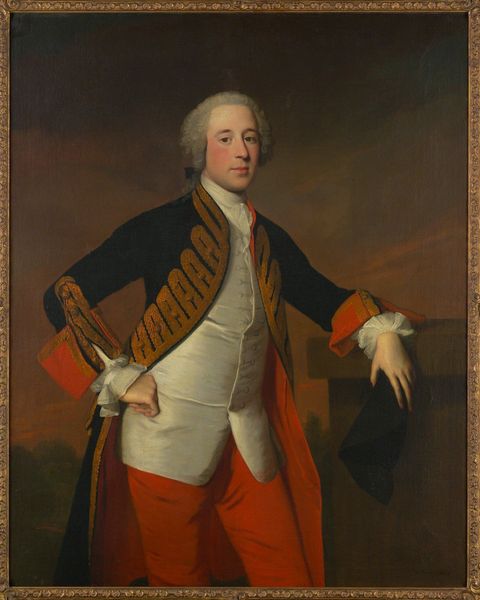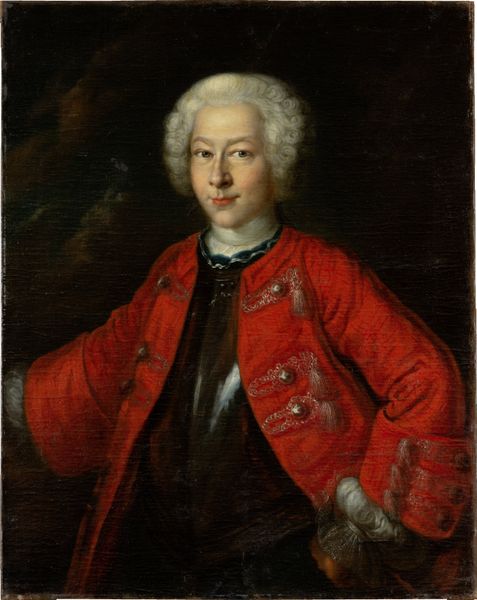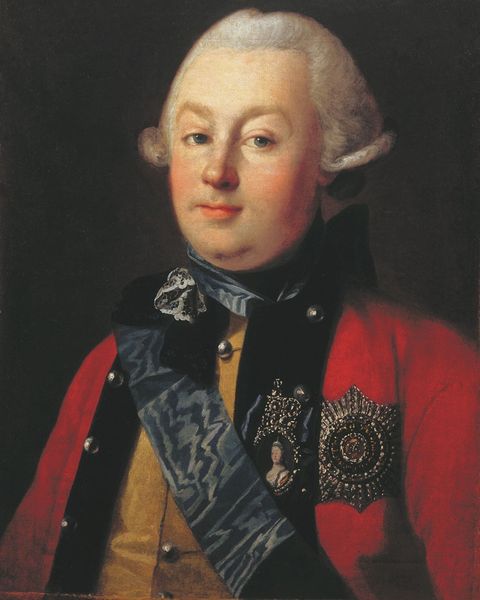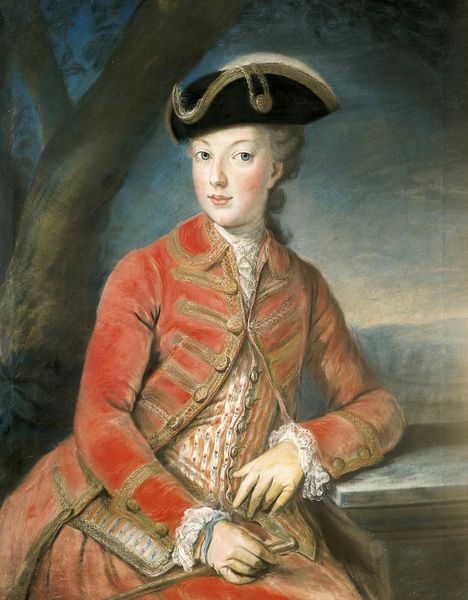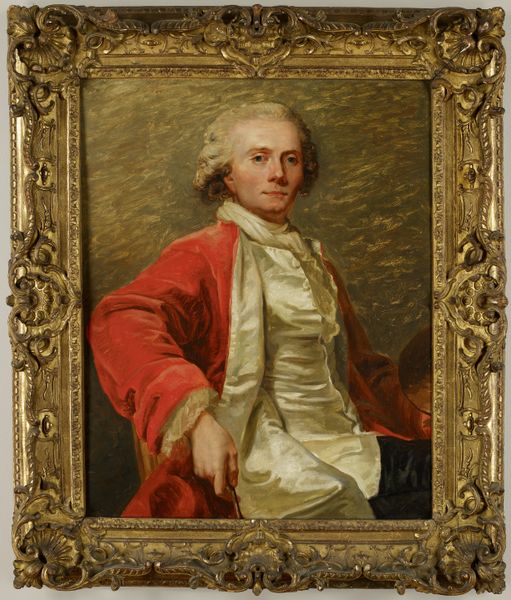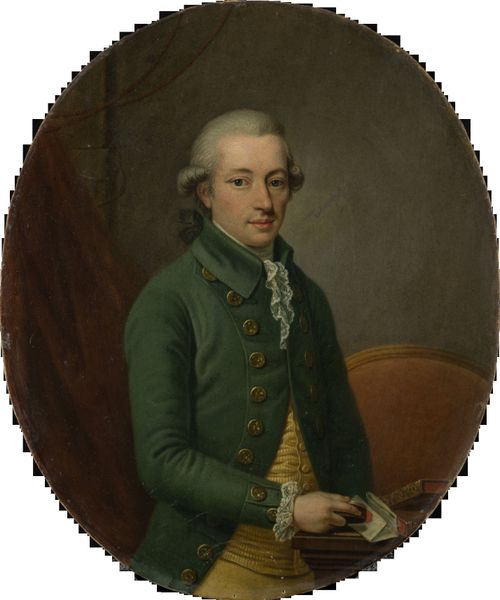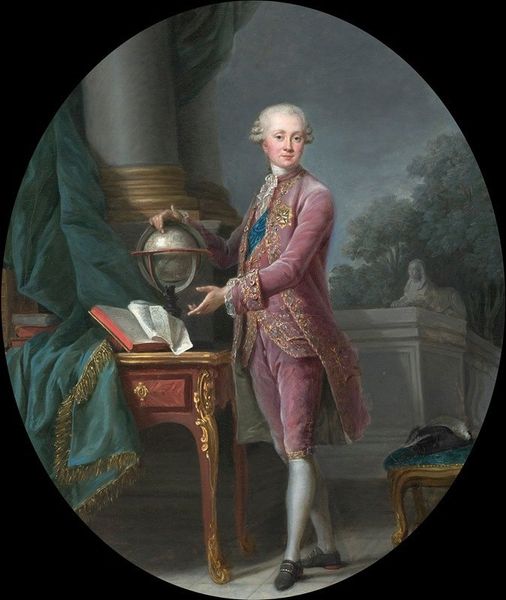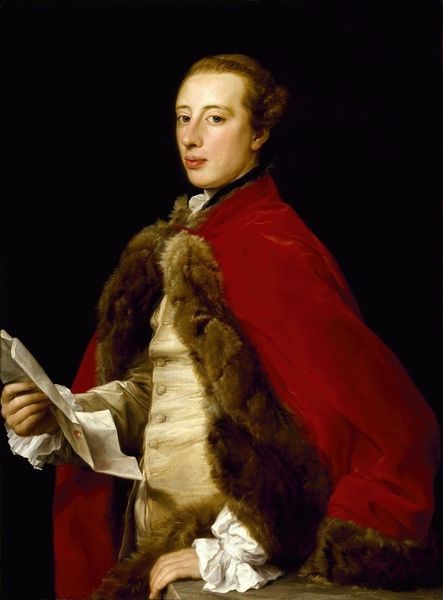
Copyright: Public domain
Curator: Looking at this painting, my first thought is its vivid colour—that bright, almost theatrical red coat really grabs your attention. Editor: Indeed. What we have here is Pompeo Batoni's 1773 oil painting, "Portrait of John Corbet of Sundorne Castle, Shrewsbury." Batoni, of course, was highly sought-after by the British aristocracy for his Grand Tour portraits. Curator: He definitely captured that air of aristocratic ease, though there's a youthful energy in Corbet's gaze too. He looks like he has important ideas brewing, perhaps the blueprint he is holding tells a tale. Editor: Absolutely. Holding architectural plans, Corbet positions himself as a modernising force on his estates, and also as a cultivated individual. The Rococo elegance softens a rather political projection. It's fascinating to see how portraiture in this period functions almost like propaganda, projecting ideals of leadership and taste. Curator: The symbolism, subtle as it may seem to us today, spoke volumes to his contemporaries. Colour itself plays a huge role. Think of the red representing power and vitality. Editor: The power and wealth certainly shaped public life. His attire reflects prevailing class structures, echoing classical themes and establishing cultural authority. He is presented as enlightened, informed by the aesthetics of the age. It suggests social position—land, legacy, and future architectural contributions. Curator: Knowing all this history gives the painting a depth beyond mere aesthetics, it invites the public to understand its world view. It shifts our perception from decorative object to window into the mindset of elites. Editor: It truly does, offering more than simply an image; the artwork presents values and ideals circulating through 18th century British society. The brushstrokes and composition serve these projected identities. Thank you for pointing out how this art reveals its cultural significance. Curator: And you've placed this individual within a wider context. The image remains charged with historical memory long after the sitter has passed, a powerful testimony to cultural heritage.
Comments
No comments
Be the first to comment and join the conversation on the ultimate creative platform.
